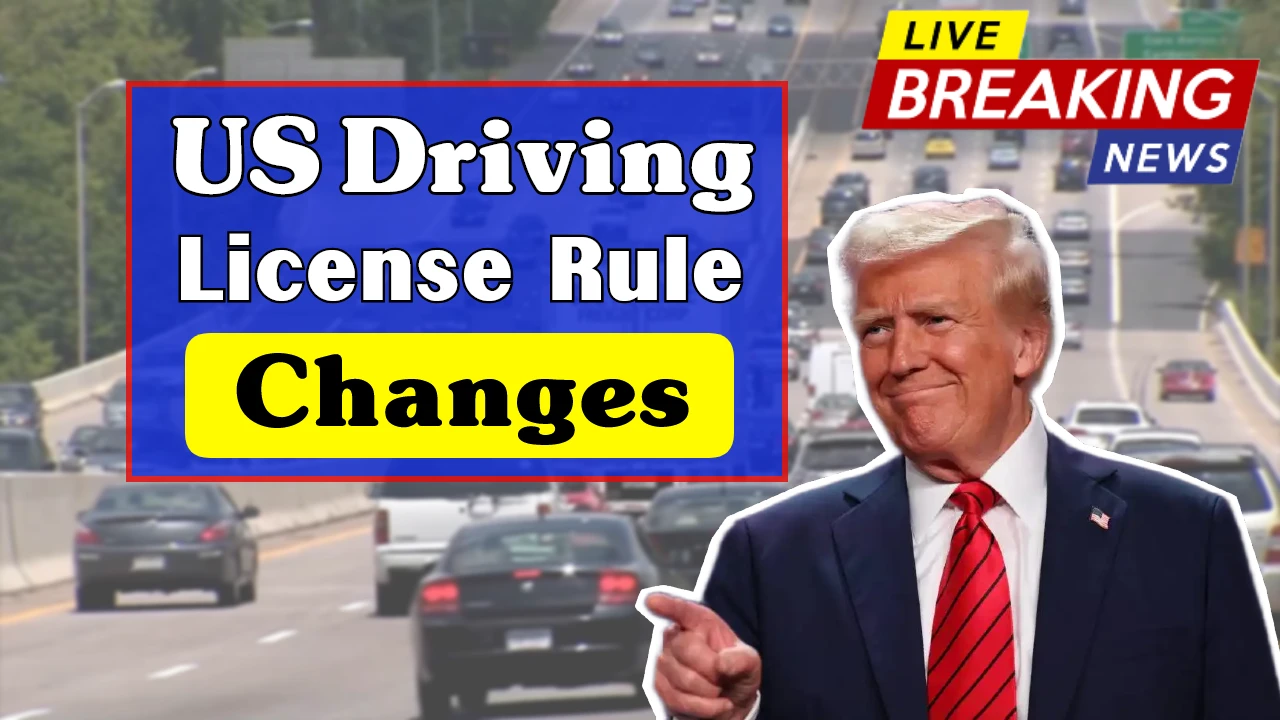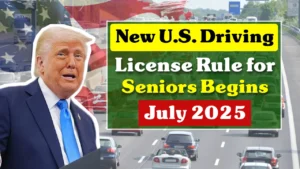Recently, the United States has made several changes to driving license regulations in pursuit of increased traffic safety and identification procedures. The updates are somewhat different state by state, but include everything from tougher ID verification to new digital license options to more stringent age-related requirements. Some states now require supplementary documentation at renewal time, and in other states, digital driver’s licenses that can be accessed via smartphone are being tested.
By these changes, protection of personal information would be enhanced and number of fake licenses would be prevented. Drivers who are recently starting the process for the first time may perceive these new regulations to have made the journey to the road longer, but if there is one direction individuals should all point our efforts, it is this: To make our roadways safer and more secure.
US Driving License Rule Changes
Federal guidelines and state reforms are some already in place and many of which take effect beginning in 2025. This will change how Americans will apply for, renew, and use driving licenses. The Act imposed on states standardized requirements for what documentation is needed and security features. States are now implementing these requirements.
Digital licenses are being introduced in some places, providing a modern, hassle-free method of toting around ID. In general, those efforts are intended to strengthen security, simplify identity verification and work with the evolving technology in the transportation system.
US Driving License Eligibility
| Eligibility Criteria |
| Individuals mist be minimum 15 years of age. However, in few states they allow learners at the age of 15. |
| Show evidence of who you are, with a birth certificate or passport |
| Proof of Social Security number, such as a Social Security card or W-2 form |
| Submit documentation of legal presence (specific documentation for non-citizens or out-of-state nationals) |
| Provide evidence of state of application residency (bills, lease, etc.) |
| Pass a vision exam demonstrating that your vision is at least 20/40 in one eye (your vision may be corrected using glasses or contacts as long as you wear them while driving) |
| Pass a written exam on traffic regulations, signs and laws. |
| Complete the state-mandated behind-the-wheel training or driving practice |
| Not be disqualified based on any physical, medical, legal or criminal restriction |
How to Apply for US Driving License
- Go to the DMV office near you or book an appointment online.
- Bring the originals of all documents such as ID, proof of Social Security, and residency.
- Complete the application form provided by your state’s DMV.
- Pass an eye vision test (they do this on the spot).
- Pass the written knowledge test for driving laws and road signs.
- If it applies, obtain a learner’s permit to practice before the road test.
- Book and complete your driving skills exam (road test) with a DMV instructor.
- Submit the examination/restoration combined application and appropriate fees.
- Then is when you will receive a hard copy of the card (or digital license if available in your state).
- Read over your license restrictions, renewal dates, and local driving rules.
Significance of US Driving License Rule Changes
The recent U.S. driving licence rule changes are big news for a number of reasons. For one, they serve to bolster the identity verification process, which should make it more difficult for would-be cardholders to get their hands on a phony ID. This serves both national security and personal safety, in particular at the time, when more services than ever depend on having a proper ID.
By leveraging the REAL ID standards, the system will be consistent across the states, a consideration of particular significance for domestic travel and federal identification purposes. Digital licenses are becoming a thing because more and more people are too busy for the DMV.
The digital ID can be scanned and coupled with a smartphone, doubles as a convenient everyday tool, eliminating the necessity to carry physical ID and reducing the change of theft or loss. Greater training and supervision hours for young or inexperienced drivers are also trying to reduce crash rates and encourage responsible driving. These changes promote better driving behaviour and long-term safety.
Latest Update on US Driving License Rule Changes
The new U.S. driving license rule changes have elicited a mixed reaction. Most citizens, particularly frequent travellers and those who are security-conscious, are happy about the improvements in REAL ID. While on the one hand the industry is likely to see these updates as a good thing, enabling the easier flow of people through airport security and federal identification checks. The emphasis on safety is also comforting to people worried about identity theft and illegal documentation.
But there is even some frustration on the part of the public with the new increasingly heavy requirements of documentation. Rural residents or people who have trouble with technology may struggle to keep up with new digital license systems or obtain the required paperwork. The digital shift may be more challenging for older adults, some experts caution.
Young drivers, however, have welcomed digital licenses and safer roads, even if it comes with the price tag of greater training hours. On balance, even with the changes, few dispute that the new rules represent a step in the right direction. Public resistance will diminish over time with the right messaging and support.
FAQs
How young can you get your driver’s license in the US?
It differs from state to state but is typically 16 for a full license and 15 for a learner’s permit.
Do all states offer digital licenses?
No, only a handful of states have already adopted digital licenses.
What is the REAL ID Act?
It is a federal standard for identification, imposed on states, requiring more stringent documentation to be presented for licenses.



